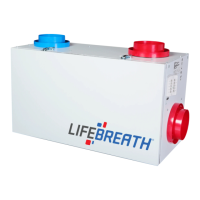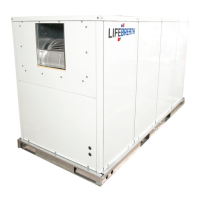wwwf
Pre-Installation Notes
•
Due to ongoing research and product development, specifications, ratings, and dimensions are
subject to change without notice. Refer to www.LIFEBREATH.com for the latest product
information.
•
Do not apply electrical power to the unit until after the completion of the installation (including
installation of low voltage control wiring).
• Ensure the installation and wiring is in accordance with CEC, NEC, and local electrical codes.
• Plug the unit into a standard designated (120 VAC) electrical outlet with ground.
• The use of an extension cord with this unit is not recommended. If the installation requires
further wiring, have a licensed electrician make all of the electrical connections. The
recommended circuit is a separate 15 A/120 V circuit.
•
Before installation, careful consideration must be given to how this system will operate if
connected to any other piece of mechanical equipment, i.e. a forced air furnace or air handler,
operating at a higher static. After installation, the compatibility of the two pieces of equipment
must be confirmed, by measuring the airflows of the HRV, by using the balancing procedure
found in this manual. Never install a ventilator in a situation where its normal operation, lack of
operation or partial failure may result in the back drafting or improper functioning of vented
combustion equipment
• Unit must be installed level to ensure proper condensate drainage. Due to the broad range of
installation and operational conditions, consider the possibility of condensation forming on
either the unit or connecting ducting. Objects below the installation may be exposed to
condensate.
• Do not install control wiring alongside electrical wire.



